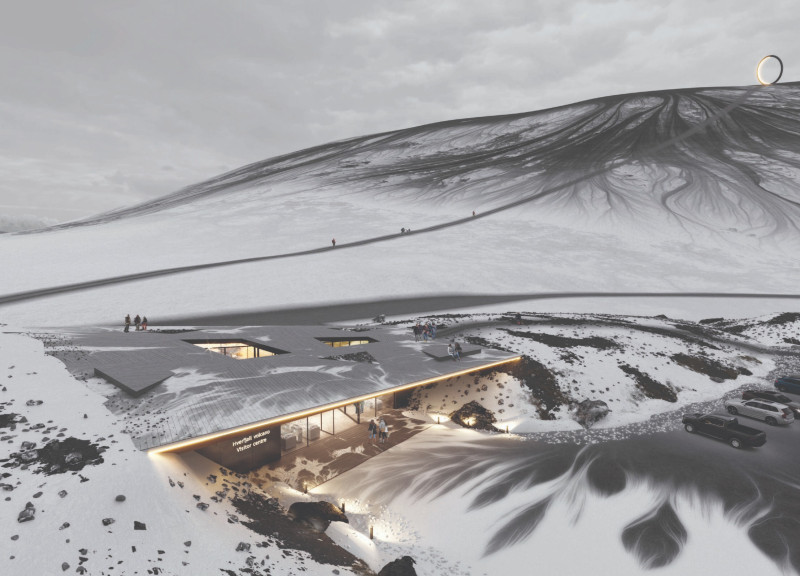5 key facts about this project
The building features a central structure accompanied by two side components, allowing for a seamless flow of movement between various functional spaces. This layout is complemented by a careful selection of materials, including locally sourced stone, dark metal, and wood, which together create a visual continuity with the surrounding landscape. The roof design, echoing the natural contours of the terrain, not only fulfills aesthetic purposes but also facilitates effective water drainage.
Innovative Use of Natural Light and Space
One of the unique aspects of "The Line of Silence" is its approach to incorporating natural light. The building’s design optimizes daylight penetration to enhance the interior ambiance while minimizing reliance on artificial lighting. Glazing elements are strategically placed to provide views of the landscape while also reflecting the surrounding environment. This consideration of light and transparency fosters an engaging atmosphere that encourages visitors to connect with the site.
Additionally, the project's educational components are integrated seamlessly within the design. Interactive installations and exhibit spaces focus on the geological narratives of the area, particularly the processes of volcanic activity. By incorporating these educational elements into the architectural fabric, the project highlights the importance of environmental awareness and understanding.
Integration with the Landscape and Community
"The Line of Silence" exemplifies a commitment to sustainability through its site-sensitive design. The landscaping around the building features native plants that require minimal maintenance and water, ensuring that the new construction integrates harmoniously with the natural setting. Pathways are designed to guide visitors from the parking area through the building and into the surrounding landscape, promoting exploration and interaction without disrupting the natural habitat.
Furthermore, the project emphasizes community engagement by providing spaces for social interaction, such as a café and collaborative areas. These spaces allow the local community to connect, facilitating educational programs and events that emphasize the geological significance of the region.
For additional insights into the design and architectural decisions made in this project, it is recommended to explore the architectural plans, architectural sections, and architectural designs presented. These resources will provide a deeper understanding of the innovative ideas and practical applications that define "The Line of Silence."

























